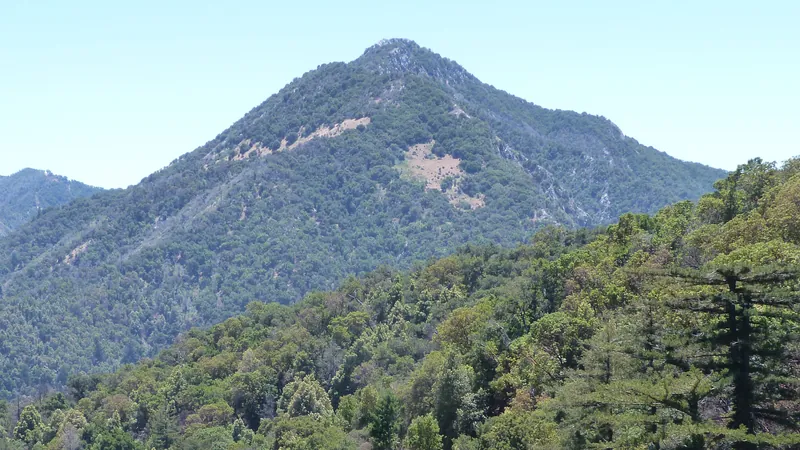
Rescue in Minutes: How Satellites Saved a Girl Scout in a Canyon
2025-09-17
Author: Sarah
A tragic hiking accident in a remote canyon of Southern California took a miraculous turn thanks to cutting-edge satellite technology. A Girl Scout suffered a potentially life-threatening concussion after falling into the canyon, but she was rescued just minutes after her leaders sent an emergency text, all thanks to a revolutionary direct-to-cell satellite service.
Since 2022, owners of the latest iPhones have had the capability to send a 911 text message via low-Earth orbit satellites when traditional cell coverage fails. This groundbreaking service became widely accessible earlier this year after mobile operator T-Mobile launched its text-to-911 service in partnership with SpaceX's Starlink, now available for most modern smartphones.
Incorporated into the next-generation 911 (NG911) system, this lifesaving feature allows individuals in emergencies to send urgent texts instead of making calls. John Snapp, vice president of technology at Intrado, explained how satellite networks are integrated to improve emergency response. Intrado’s Emergency Call Relay Center (ECRC) sprang into action when the distress call came in from the injured Girl Scout leaders on June 22, after one of the girls lost consciousness during an exploration of Pico Blanco.
What began as an adventurous overnight hike for a troop of seven teenage girls turned into a race against time. Without the satellite service, rescuers would have faced daunting challenges, including the possibility of a lengthy search.
"Previously, rescuers would have to hike out, find a signal, and navigate back to guide the team," Snapp said. "Now, we have precision location data instantly, which is life-saving.”
Los Padres National Forest, though popular among nature enthusiasts, poses significant communication challenges due to its rugged landscape. Intrado's Jason Davis noted that without satellite technology, pinpointing the emergency caller in such locations is usually an arduous task.
Thanks to satellite-enabled communication, Intrado swiftly identified the location of the call and coordinated with local emergency responders. Within minutes, a helicopter was dispatched to retrieve the injured scout, followed by another chopper to bring the rest of the troop to safety.
Snapp pointed out that only about 80% of the U.S. territory has reliable terrestrial cell network coverage, and the remote beauty of Los Padres National Forest previously fell into the 20% that was off-grid.
Starlink's mission is to provide connectivity to remote areas globally, leveraging a fleet of around 8,000 satellites, with over 500 facilitating direct-to-cell messaging. Other companies like Vodafone and AT&T are also exploring similar satellite-connected services, making safety and communication a priority for adventurers and mariners alike.
The integration of satellite technology into everyday devices is revolutionary. "Now, it’s like having another cell tower—only it’s in space," Snapp stated. "This technology will change the game for adventurers everywhere who seek to explore the untamed wilderness without the fear of communication failure."


 Brasil (PT)
Brasil (PT)
 Canada (EN)
Canada (EN)
 Chile (ES)
Chile (ES)
 Česko (CS)
Česko (CS)
 대한민국 (KO)
대한민국 (KO)
 España (ES)
España (ES)
 France (FR)
France (FR)
 Hong Kong (EN)
Hong Kong (EN)
 Italia (IT)
Italia (IT)
 日本 (JA)
日本 (JA)
 Magyarország (HU)
Magyarország (HU)
 Norge (NO)
Norge (NO)
 Polska (PL)
Polska (PL)
 Schweiz (DE)
Schweiz (DE)
 Singapore (EN)
Singapore (EN)
 Sverige (SV)
Sverige (SV)
 Suomi (FI)
Suomi (FI)
 Türkiye (TR)
Türkiye (TR)
 الإمارات العربية المتحدة (AR)
الإمارات العربية المتحدة (AR)